THE FOLK ART MUSEUM IN NICOSIA
I am visiting the Folk Art Museum this morning
. I prefer to walk so I am out after breakfast. I had a rough look on the map and more or less I know where it is.
I reach the Museum 20 minutes later on foot and the Museum is next to Archbishop's Palace.
The building itself is originally 15th century gothic with latter additions and it used to be a Monastery.
It was originally used as a monastery for the Latin Order of Benedictines and was taken over by the Greek Orthodox Church sometime before the Ottoman occupation in 1571. It went on to become the Archibishop’s Palace prior to the building of the new Archbishopric nearby.
The door is carved stone archway with a 16th century fresco of the Annunciation, and it is supposed to be the oldest fresco of the city.
Exhibition:
What the visitor sees here is a vast collection of everyday items from a forgotten era. The collection is rich and it is split in different rooms. This is where you will find the costumes of the people; the looms used to weave their fabrics; pottery; furniture –often beautifully carved and painted in bright colours; decorative baskets that were used for different things; Jewellery and other metal work including the most intricate filigree work
. There are samples of embroidery as well.
A stroll out here makes the guest feel as if he enters a time-machine that takes him back to Nicosia, a century and a half back. This is how I felt anyway.
You see, 150 years back the people of Cyprus were still under the yoke of Ottoman rule and the majority of them were extremely poor. A completely different picture of what we have nowadays, with
very few shops –mostly artisans’ workshops such as cobblers, tailors, furniture-makers, candle-makers, tinsmiths and small foundries that produced farming implements and household utensils. Most people lived off the land.
After paying a tenth of their produce and feeding their families, they traded whatever meager surplus they had in order to acquire the few other basic essentials they could not produce for themselves
. It was a way of life that had existed throughout 2.000
Start counting the years of hardship and occupation ….well, Cyprus
has been occupied by Rome, Byzantium, the Lusignans, Venetians, the Ottomans and later the British.
As with every nation that is subjected to foreign domination, Cypriots had a strong desire to retain their national, cultural and artistic identity.
Of course, elements of the styles and artistry of the occupier of the time were slowly incorporated into the local identity but this only served to enrich it in a way that made it into something unique.
Men used to work the land while women would spend whatever spare time they had weaving, sewing and embroidering for their family and trousseaus for their daughters
.
They were extremely adept, producing pieces of incredible beauty, often from materials such as silk, cotton and wool that they had gathered, spun, woven and dyed themselves.
In the city, the artisans were mainly men. There were potters and coppersmiths: those that specialized in leather-goods; knife-makers; jewelers, woodworkers and stonemasons.
Nicosia those days was also famous for its weekly Women’s Bazaar, where the wealthier 'town’ ladies could buy cloth, handmade lace and other haberdashery items.
I found the visit remarkably interesting and I can say that it did travel me back. I took several photos which I wish to share with you.
When I showed my VT Press Pass I had access to the Old Archbishop’s Palace prior to the building of the new Archbishopric where tourists are prohibited to enter
.
It was indeed a privilege for me.
Tel: +357 22432578
Opening Hours-Tuesday to Friday 09:00 to 16:00
Saturday: 09:00 to 13:00
(On Mondays the Museum remains closed)
So, come along, let me show you around.
Folk Art Museum of Cyprus
Wednesday, January 16, 2013
 Nicosia, Cyprus
Nicosia, Cyprus
Other Entries
-
49My Stay at the Four Seasons in Limassol
Jan 115 days prior Limassol, Cyprusphoto_camera23videocam 0comment 14
Limassol, Cyprusphoto_camera23videocam 0comment 14 -
50My stroll -Four Seasons Hotel in Limassol
Jan 124 days prior Limassol, Cyprusphoto_camera43videocam 0comment 17
Limassol, Cyprusphoto_camera43videocam 0comment 17 -
51The Crack of Dawn- Four Seasons Hotel -Limassol
Jan 124 days prior Limassol, Cyprusphoto_camera26videocam 2comment 6
Limassol, Cyprusphoto_camera26videocam 2comment 6 -
52The Caprice Restaurant -Londa
Jan 124 days prior Limassol, Cyprusphoto_camera10videocam 0comment 0
Limassol, Cyprusphoto_camera10videocam 0comment 0 -
53Giovanni Caracciolo Executive Chef -Caprice
Jan 124 days prior Limassol, Cyprusphoto_camera7videocam 0comment 2
Limassol, Cyprusphoto_camera7videocam 0comment 2 -
54The Shiseido Spa of the Four Seasons -Limassol
Jan 124 days prior Limassol, Cyprusphoto_camera15videocam 0comment 0
Limassol, Cyprusphoto_camera15videocam 0comment 0 -
55Lunch at the "Artima Bistro" Limassol
Jan 133 days prior Limassol, Cyprusphoto_camera12videocam 0comment 10
Limassol, Cyprusphoto_camera12videocam 0comment 10 -
56The Glamorous Interior -the Four Seasons-Limassol
Jan 133 days prior Limassol, Cyprusphoto_camera28videocam 0comment 7
Limassol, Cyprusphoto_camera28videocam 0comment 7 -
57Cafe Tropical -Four Seasons Limassol
Jan 133 days prior Limassol, Cyprusphoto_camera11videocam 0comment 12
Limassol, Cyprusphoto_camera11videocam 0comment 12 -
58The Stretto Cafe/Restaurant -Limassol
Jan 133 days prior Larnaca, Cyprusphoto_camera6videocam 0comment 0
Larnaca, Cyprusphoto_camera6videocam 0comment 0 -
59Travelling by Bus in Cyprus -Limassol/Nicosia
Jan 142 days prior Nicosia, Cyprusphoto_camera4videocam 0comment 7
Nicosia, Cyprusphoto_camera4videocam 0comment 7 -
60The Executive Lounge of the Hilton -Cyprus
Jan 142 days prior Nicosia, Cyprusphoto_camera8videocam 0comment 0
Nicosia, Cyprusphoto_camera8videocam 0comment 0 -
61The Colours of a Cloudy Coast - Limassol
Jan 142 days prior Limassol, Cyprusphoto_camera9videocam 0comment 0
Limassol, Cyprusphoto_camera9videocam 0comment 0 -
62My Stay at the Cyprus Hilton -Nicosia
Jan 142 days prior Nicosia, Cyprusphoto_camera9videocam 0comment 1
Nicosia, Cyprusphoto_camera9videocam 0comment 1 -
63Andreas Georgiou -Executive Chef of Cyprus Hilton
Jan 151 day prior Nicosia, Cyprusphoto_camera4videocam 0comment 2
Nicosia, Cyprusphoto_camera4videocam 0comment 2 -
64The SPA at the Hilton in Cyprus
Jan 151 day prior Nicosia, Cyprusphoto_camera10videocam 0comment 0
Nicosia, Cyprusphoto_camera10videocam 0comment 0 -
65The Paddock Bar and Lounge -Hilton
Jan 151 day prior Nicosia, Cyprusphoto_camera7videocam 0comment 0
Nicosia, Cyprusphoto_camera7videocam 0comment 0 -
66Folk Art Museum of Cyprus
Jan 16 Nicosia, Cyprusphoto_camera66videocam 0comment 9
Nicosia, Cyprusphoto_camera66videocam 0comment 9 -
67Archiepiskopou Kyprianou Square-Nicosia
Jan 16later that day Nicosia, Cyprusphoto_camera12videocam 0comment 0
Nicosia, Cyprusphoto_camera12videocam 0comment 0 -
68Dinner at the Fontana Restaurant
Jan 16later that day Nicosia, Cyprusphoto_camera14videocam 0comment 0
Nicosia, Cyprusphoto_camera14videocam 0comment 0 -
69"CASALE Panayiotis" Traditional Village, -MY STAY!
Jan 171 day later Kalopanayiotis, Cyprusphoto_camera17videocam 0comment 5
Kalopanayiotis, Cyprusphoto_camera17videocam 0comment 5 -
70Ambiling around Casale Panayiotis
Jan 171 day later Kalopanayiotis, Cyprusphoto_camera26videocam 0comment 1
Kalopanayiotis, Cyprusphoto_camera26videocam 0comment 1 -
71The Village of Kalopanayiotis
Jan 171 day later Kalopanayiotis, Cyprusphoto_camera27videocam 0comment 2
Kalopanayiotis, Cyprusphoto_camera27videocam 0comment 2 -
72MOUTOULLAS - Marathasa Valley
Jan 171 day later Moutoullas, Cyprusphoto_camera11videocam 0comment 0
Moutoullas, Cyprusphoto_camera11videocam 0comment 0 -
73The Cultural Centre of Casale Panayiotis.
Jan 182 days later Kalopanayiotis, Cyprusphoto_camera25videocam 0comment 2
Kalopanayiotis, Cyprusphoto_camera25videocam 0comment 2 -
74The Chapel of Saint Andronikos -Kalopanayiotis
Jan 182 days later Kalopanayiotis, Cyprusphoto_camera9videocam 0comment 0
Kalopanayiotis, Cyprusphoto_camera9videocam 0comment 0 -
75Saint John Lambadistis and Byzantine Museum
Jan 182 days later Kalopanayiotis, Cyprusphoto_camera46videocam 0comment 2
Kalopanayiotis, Cyprusphoto_camera46videocam 0comment 2 -
76The SPA of the CASALE Panayiotis!
Jan 182 days later Kalopanayiotis, Cyprusphoto_camera25videocam 0comment 2
Kalopanayiotis, Cyprusphoto_camera25videocam 0comment 2 -
77A Visit to the Farm House of Casale Panayiotis
Jan 182 days later Kalopanayiotis, Cyprusphoto_camera52videocam 1comment 32
Kalopanayiotis, Cyprusphoto_camera52videocam 1comment 32 -
78Livadhiotis Hotel - An Amazing Stay!
Jan 193 days later Larnaca, Cyprusphoto_camera17videocam 0comment 0
Larnaca, Cyprusphoto_camera17videocam 0comment 0 -
79The Beautiful Sunset at Tekke by the Salt Lake
Jan 193 days later Larnaca, Cyprusphoto_camera25videocam 0comment 5
Larnaca, Cyprusphoto_camera25videocam 0comment 5 -
80The Blu Cafe in Larnaca
Jan 193 days later Larnaca, Cyprusphoto_camera6videocam 0comment 0
Larnaca, Cyprusphoto_camera6videocam 0comment 0 -
81Casale Panayiotis -Restaurants and Bar
Jan 193 days later Kalopanayiotis, Cyprusphoto_camera31videocam 0comment 0
Kalopanayiotis, Cyprusphoto_camera31videocam 0comment 0 -
82Flamingoes at the Salt Lake in Larnaca
Jan 193 days later Larnaca, Cyprusphoto_camera44videocam 0comment 6
Larnaca, Cyprusphoto_camera44videocam 0comment 6 -
83The Church of Saint Lazarus
Jan 226 days later Larnaca, Cyprusphoto_camera8videocam 0comment 0
Larnaca, Cyprusphoto_camera8videocam 0comment 0 -
84Larnaca is Changing....
Jan 226 days later Larnaca, Cyprusphoto_camera23videocam 0comment 12
Larnaca, Cyprusphoto_camera23videocam 0comment 12

 Nicosia, Cyprus
Nicosia, Cyprus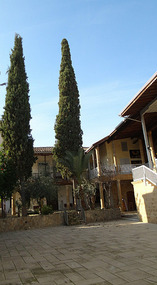
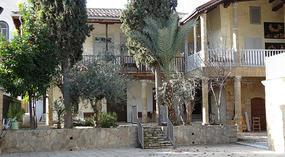
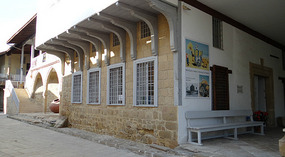
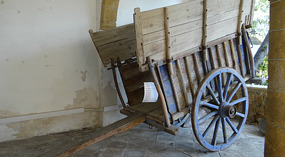
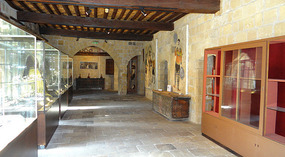






























































2025-05-22